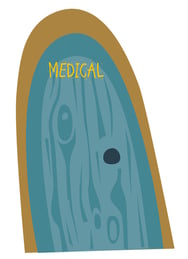 Who says you’re too old to trick-or-treat? This week, we offer 8 tricks to help you become a better proofreader, along with a few treats at the end for those who proofread marketing, legal or medical copy.
Who says you’re too old to trick-or-treat? This week, we offer 8 tricks to help you become a better proofreader, along with a few treats at the end for those who proofread marketing, legal or medical copy.
Not all of these techniques will work for everyone, and they won’t work in all instances. Much will depend on the length and complexity of the text, the time available for proofreading and what works for you individually. I use some of these tricks regularly and others not at all. Give them a try with your next document and see what works for you.
- BLOW IT UP. View the text at 125 or 150 percent — or even at a larger size if you can do so comfortably on your screen. Because I read all day every day, my eyes are perpetually tired. Using a 32-inch monitor (yes, it’s huge) with the text enlarged to 150 or 200 percent not only makes the text easier to see, but it has the effect of slowing my reading because my eyes can’t so easily skim the page.
- WASH, RINSE, REPEAT. Proofreading longer documents is a lot more manageable when you take several passes. Some will argue this takes more time that they don’t have and that they’d rather look for everything all at once. But it’s time well-spent. Here’s how I typically approach proofreading, say, a journal:
- Run a spell-check. If the document is a PDF, copy the text and paste it into a word-processing program. The spell-check won’t catch every error, but it can catch the kind of blatant typos that are just plain embarrassing when they make it into print. Because the spell-check also will highlight most proper names and terms it doesn’t recognize, this is when I check the accuracy of organization names, unfamiliar or esoteric terms, and so on.
- Check the headers and footers to make sure the page numbering and issue date are accurate and that the text is consistent across pages.
- Compare the table of contents to each article listed to ensure the correct page numbers are indicated.
- Do a big-picture review for stylistic inconsistencies in headings, callouts, captions, tables, etc. If some figures are referenced in the text, make sure all are.
- Proofread for grammar and punctuation problems and text inconsistencies. Check cross-references as I encounter them.
- Ensure that all footnote callout numbers in the text have a matching reference.
- TAKE A TIME-OUT. Especially if you’re proofreading your own work, give yourself a day (if possible) between when you finish writing and when you begin to proofread. That time will not only give your eyes a chance to rest but will give you some distance from — and, ideally, a more objective perspective on — your work.
- READ ALOUD. Hearing the words as you read them out loud can highlight errors you might miss using just your eyes. (I entertain myself at the same time by reading with different accents: British, Aussie, Irish. I probably need to get out more …)
- POINT (you officially have permission). Never mind what your mother told you about not pointing. Pointing at words as you read them can help uncover missing small words such as a, the and to.
Other Potentially Useful Tips
I’ve heard or read various other tips that don’t work for me, but your mileage may vary:
- PROOFREAD A PRINTED COPY. I used to work exclusively on hard copy but found it took twice as long because I (or someone else) then had to make the changes in the electronic version, which introduced another opportunity for errors. Not to mention how many trees were sacrificed to print those enormous double-spaced manuscripts …
- DIVIDE AND CONQUER. This tip involves placing a ruler or sheet of paper beneath the line you’re reading to isolate it from the sea of surrounding text — obviously difficult to do on a monitor (see above).
- BACKWARDS READ. Some recommend reading backwards word by word; others recommend doing it sentence by sentence. The theory is that doing so slows you down to the point where you have to read every word, rather than subconsciously fill in any missing words. I get the concept, but trying to do it makes me crazy.
That’s it for the tricks.
Now, as promised, the treats … We’ve developed lists of the most common proofreading errors we find in marketing, medical and legal copy. Click on the desired door(s) below to access a downloadable copy of the corresponding tip sheet. Be sure to share in the comments any other proofreading tips or tricks you use.
Oh, and … HAPPY HALLOWEEN!






